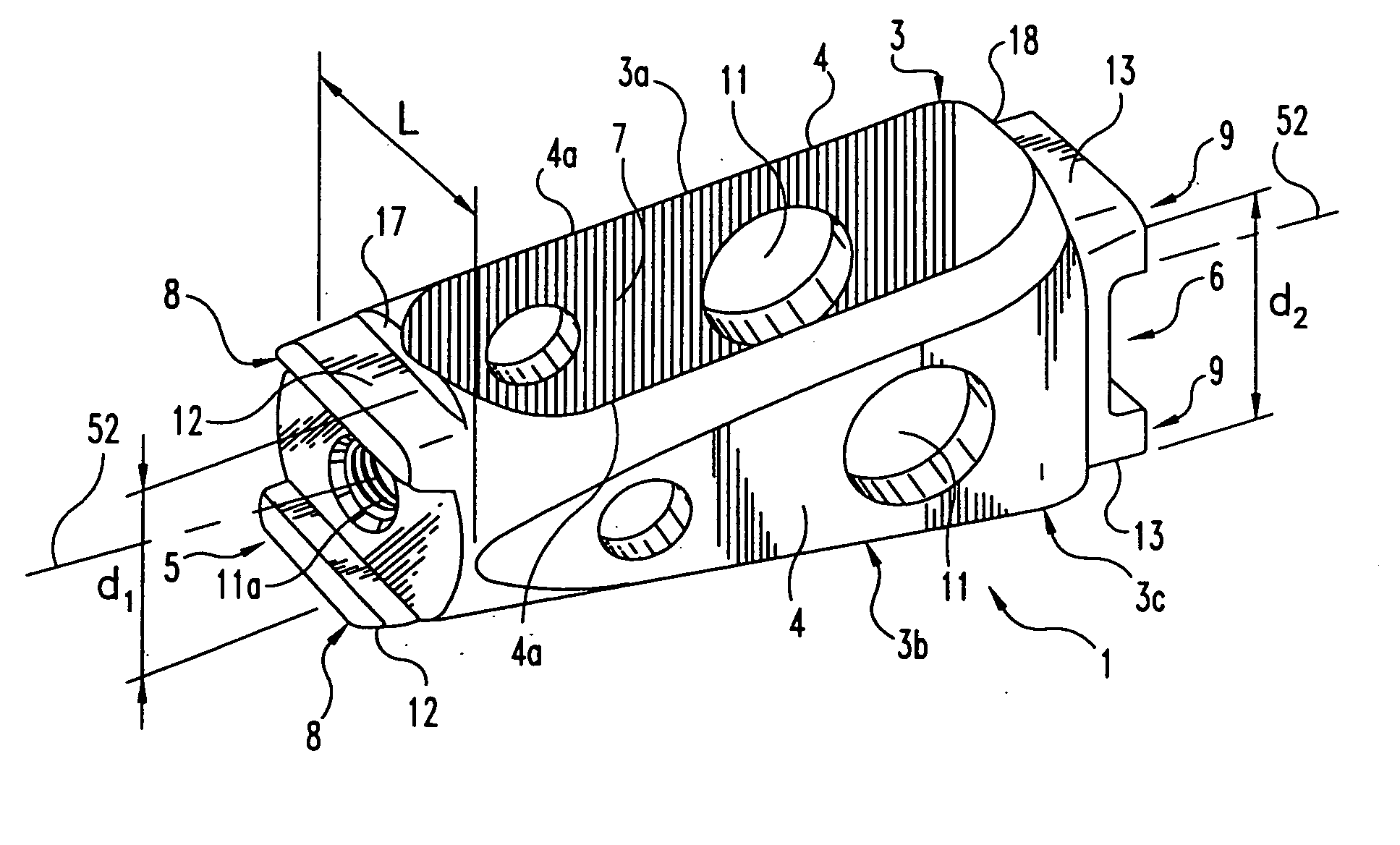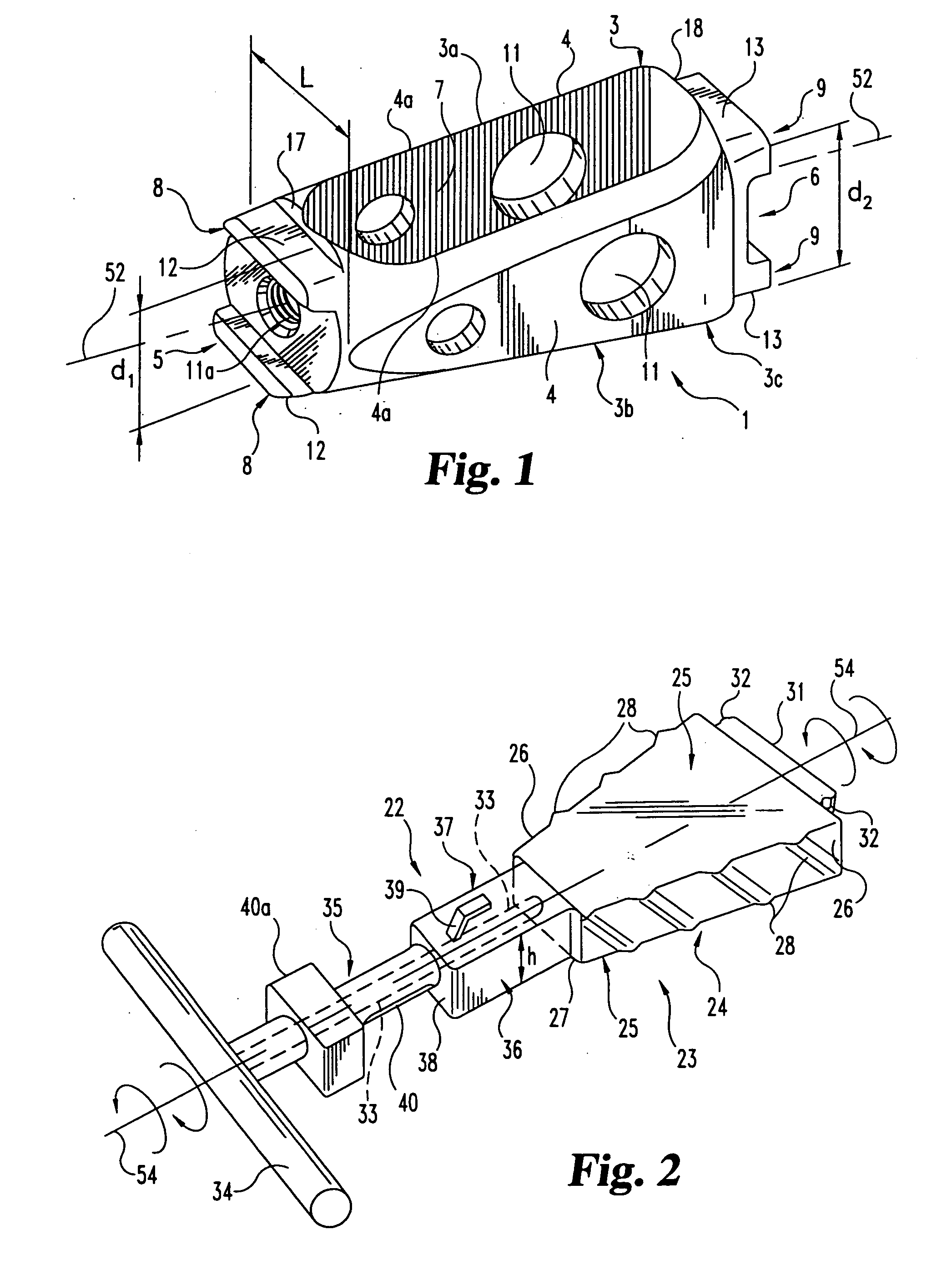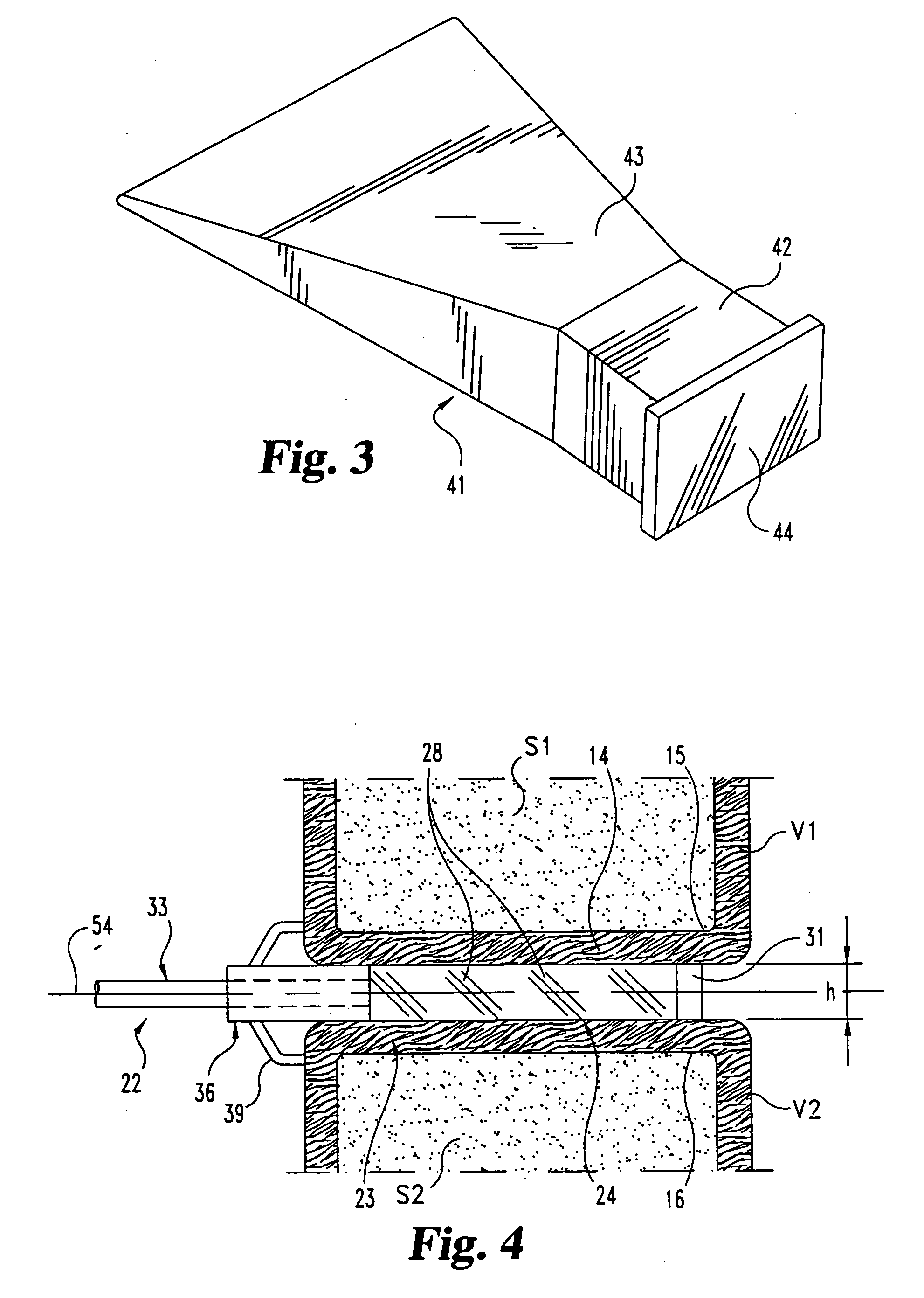Spinal implant and cutting tool preparation accessory for mounting the implant
a technology for spinal implants and cutting tools, applied in the field of spinal implants and surgical tools, can solve the problems of abnormal motions that become a source of pain, the effect of reducing the effectiveness over a period of time, and the compression of the disc, so as to facilitate the insertion of the implant, inhibit the expulsion of the implant, and promote bone fusion
- Summary
- Abstract
- Description
- Claims
- Application Information
AI Technical Summary
Benefits of technology
Problems solved by technology
Method used
Image
Examples
Embodiment Construction
[0037] For the purposes of promoting an understanding of the principles of the invention, reference will now be made to the embodiments illustrated herein and specific language will be used to describe the same. It will nevertheless be understood that no limitation of the scope of the invention is thereby intended. Any alterations and further modifications in the described processes, systems or devices, and any further applications of the principles of the invention as described herein, are contemplated as would normally occur to one skilled in the art to which the invention relates.
[0038]FIGS. 1, 6, and 7 depict spinal cage implant 1. Implant 1 is adapted to be inserted in a cavity provided in a damaged intervertebral disc 2 (FIG. 7), so as to restore the normal height of the intervertebral space between the two vertebrae V1 and V2 adjacent to the disc 2, for example, the lumbar vertebrae L3, L4 as depicted in FIG. 7. FIG. 1 shows implant 1 disposed along its longitudinal axis 52....
PUM
| Property | Measurement | Unit |
|---|---|---|
| height | aaaaa | aaaaa |
| discal height | aaaaa | aaaaa |
| shape | aaaaa | aaaaa |
Abstract
Description
Claims
Application Information
 Login to View More
Login to View More - R&D
- Intellectual Property
- Life Sciences
- Materials
- Tech Scout
- Unparalleled Data Quality
- Higher Quality Content
- 60% Fewer Hallucinations
Browse by: Latest US Patents, China's latest patents, Technical Efficacy Thesaurus, Application Domain, Technology Topic, Popular Technical Reports.
© 2025 PatSnap. All rights reserved.Legal|Privacy policy|Modern Slavery Act Transparency Statement|Sitemap|About US| Contact US: help@patsnap.com



